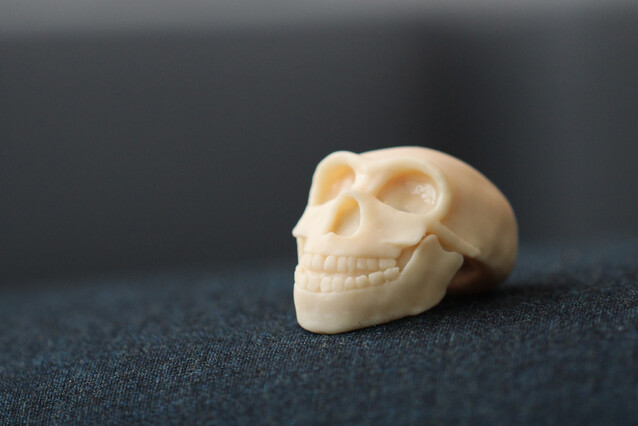Conversing with the past: how evolution shaped the human mind
A team of researchers in Vienna have reconstructed the evolutionary history of human brain functions. They combined genetic and brain network data to reveal the impact of natural selection on the human and hominin minds over millions of years. In the journal Cell Reports, they highlight the cognitive traits that have been the most important in the evolution of archaic hominins, such as the Neanderthals, and modern humans. Emerging with an early hominin ancestor, language and strategic thinking became the signature targets of natural selection in modern humans, leading to our extraordinary abilities.
The human brain and its abilities are unique in the animal kingdom: the way we speak, think, and share information across generations finds no match in our ape cousins. However, our closest extinct relatives, Neanderthals and Denisovans, may have had very similar talents.
Exploring the emergence of human cognitive traits over evolutionary time is a technological challenge. “Understanding the past of the human mind is hardly possible if you base your investigation on anatomy only. We have fossilised skulls, but we don’t have access to full ancient brains,” says Wulf Haubensak, former group leader at the IMP, now professor at the Medical University of Vienna.
What we do have, however, is ancient genomes and all the information they contain. The full genomes of Neanderthal and Denisovans were first sequenced in 2010 and 2012, respectively. Comparing these genomes to ours has opened a brand-new window into the past. As sequencing and analysis techniques progress, these comparisons become more accurate and offer new opportunities for research.
A team of scientists at the IMP, VRVis Zentrum für Virtual Reality und Visualisierung, Max Perutz Labs, and others have used ancient genomes and modern brain imaging data to reconstruct the history of brain functions across archaic hominins all the way to modern humans. In their study now published in Cell Reports, they show that language and strategic thinking were the primary targets of natural selection in modern humans.
Picking the human brain to understand the past
“When you visualise the human brain with a functional MRI, some areas light up as the subject performs a specific task. These areas represent networks of active neurons,” explains Joanna Kaczanowska, co-first author of the study. “We know which genes are the most different between humans and other species, and by comparing their expression sites in the brain to these task-specific networks, we were able to pick up the networks that could reflect functional differences between species.”
Instead of extrapolating information from fossilised skulls, the scientists mined big datasets of the modern human brain and dug for cues of the past. They looked for traces of natural selection in all human genes involved in brain networks to find out which cognitive traits had been under the strongest selection pressures.
After following this procedure with modern humans, they walked back ancestral lineages to archaic primates, from 60 million years ago until now, mapping selection pressures as they went. They found that genes involved in speech had gone through many changes in our early hominin ancestors, between 7.4 and 1.7 million years ago, suggesting that basic speaking abilities were crucial for the evolution of Denisovans, Neanderthals, and modern humans.
Once modern humans branched off Neanderthals about 500,000 years ago, strategic thinking became a prominent target of natural selection, in addition to language. The co-evolution of language skills and a strategic mind might have contributed to our evolutionary success, in comparison to Denisovans and Neanderthals, which went extinct.
“Ever since I looked at displays of Lucy as a boy, I’ve been fascinated by the human past,” says Wulf Haubensak. “Digging for ancient skulls is very exciting, but so far it hasn’t provided much information about the evolution of the brain and its functions. Exploring current and ancient genomes and mapping this data onto the modern human brain yields new insights into our history.”
In the future, Haubensak wants to refine the method to look at specific sets of networks in the brain – those that touch upon emotions and social interactions. He hopes to inspire more data mining studies: there is a lot more to discover within the wealth of genomic and anatomical datasets created in the past decades.
Original publication
*These authors contributed equally to this work.
